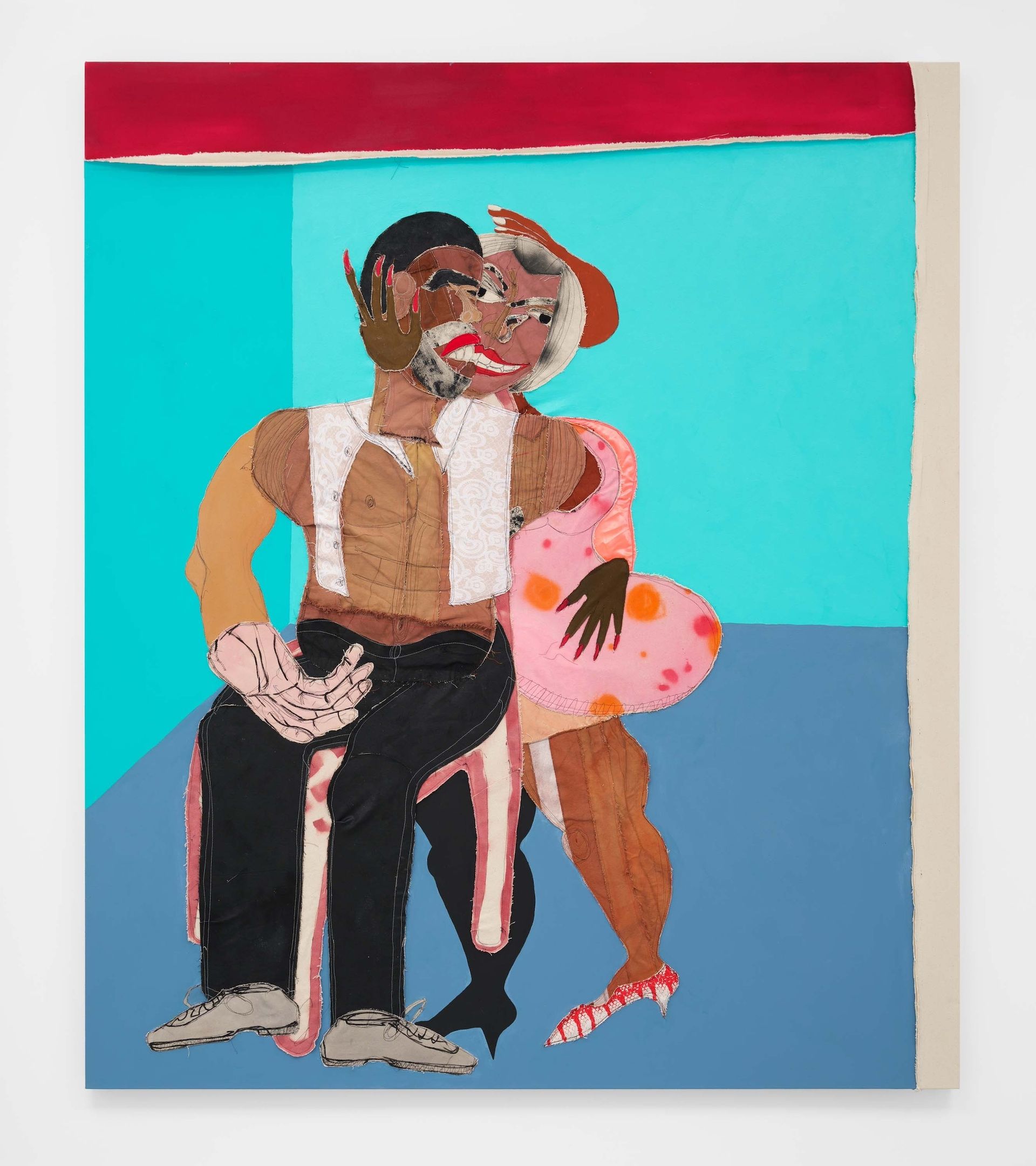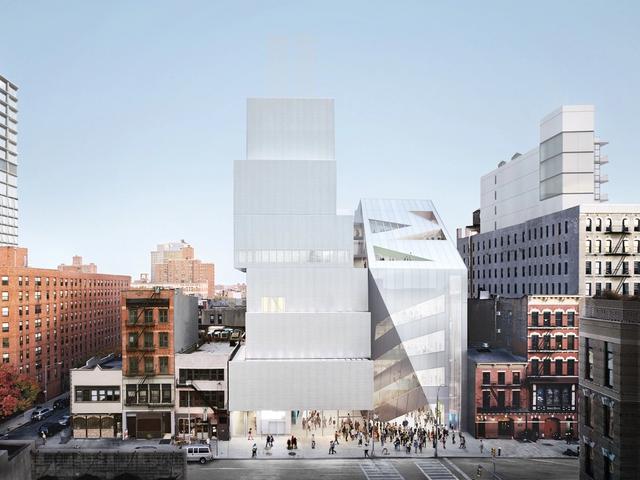As audiences return to the New Museum later this year, they’ll find a pair of “Art Lovers” welcoming them on the building’s façade. That is the title of a new site-specific sculptural relief by the Harlem-born artist Tschabalala Self, set to debut alongside the museum’s new 60,000 sq. ft expansion this autumn. The 13ft-tall artwork depicts a Black couple kissing in a swirling embrace, their limbs exaggerated to emotional effect—a signature flourish of Self’s work.
Art Lovers (2025) is the latest commission in the New Museum’s long-running façade sculpture programme, inaugurated with the opening of the institution’s Bowery building in 2007. The piece was inspired by Madly, a 2022 painting by Self, but also one of the newly expanded museum’s defining architectural hallmarks: the point at which the fresh, OMA-designed building angles up to meet the familiar one designed by Sanaa.
“The architects call this the ‘kiss point’,” says Massimiliano Gioni, the New Museum’s artistic director, with a laugh. Gioni was among those who chose Self for the commission, which counts Chris Burden, Isa Genzken and Glenn Ligon among its alumni. Self’s roots made her a “particularly appropriate choice to inaugurate the expanded building”, he adds. “She's a quintessential New York artist.”
Self’s relationship with the New Museum began in 2017-18, when she was included in the exhibition Trigger: Gender as a Tool and a Weapon. Since then, her elegantly collaged paintings exploring the beauty and fragility of the Black body have turned her into a leading artistic voice of her generation. “My work is very anecdotal, it’s based on experiences, hearsay even,” she told The Art Newspaper in 2020. “I want people to feel that they are seen and that they are acknowledged and that they are assured. I want to make something that feels real and truthful—the only thing that can liberate people is the truth.”

Tschabalala Self, Madly, 2022 Courtesy of the artist, Galerie Eva Presenhuber (Zurich/Vienna), Pilar Corrias (London), Petzel Gallery (New York)
Sculpture is increasingly integral to Self’s practice, though her experience with large-scale public art is limited. Art Lovers marks the artist’s first large-scale installation in New York, and just her second such project ever. For the first, Self mounted Seated, a nine-foot-tall sculpture of a Black woman wrapped in a chair, at London’s Coal Drops Yard in 2022, then reinstalled the piece at the De La Warr Pavilion in Bexhill-on-Sea the following year. But a month after the sculpture arrived in the latter location, it was defaced with white spray paint in what the artist called a “racially-motivated act of vandalism”.
A shock at first, the experience ultimately proved edifying for the 34-year-old artist, who explains that the incident “highlighted a lot of the social and political concerns” she speaks about in her work. “So much negativity is projected onto the Black and gendered body,” Self says. “Sometimes when you say that, people think you’re being dramatic. But the fact that even a sculpture, an inanimate object, was assaulted, proves that point.”
It proved something else too. Days after the vandalism, more than 300 citizens of Bexhill-on-Sea voluntarily convened to clean Seated. “We had to extend the event to make sure everyone who had been queuing could participate due to the high turnout,” a pavilion spokesperson said at the time.
Just when Self’s sculpture seemed fated to be remembered for all the wrong reasons, the local community came together to rewrite the narrative. “There was one person involved in the vandalism, whereas there were hundreds of people involved in the repair,” Self says. “It was an opportunity for healing, for rebuilding, for education, for people to transcend these issues.” She came away from the experience not jaded, but reinvigorated by the power of public art.
You can feel the enthusiasm in Art Lovers, a scene of intimacy and love that feels overtly political in its simple positivity. “I’m almost shy to say it, because cynicism is taken more seriously than optimism, [but] I wanted to contribute something positive,” Self says. “Artists are rightfully tasked with the responsibility of showing what is truly happening in our present moment but also what the future can be. Because our present moment is so complicated and dark, I didn't want to simply show a mirror to that. I wanted to show an aspiration for better times to come.”



